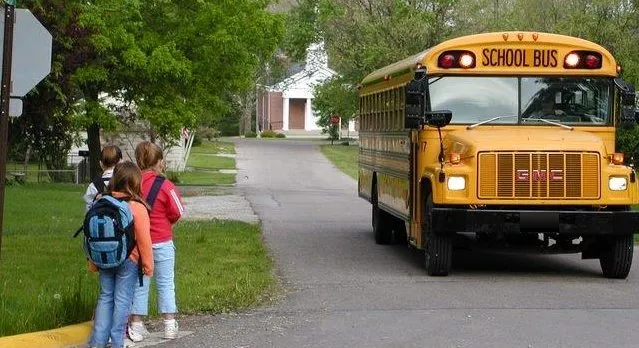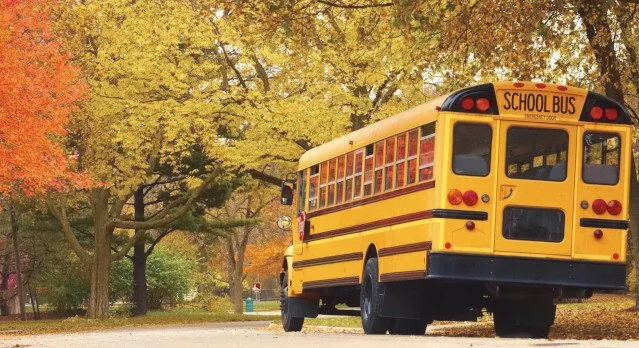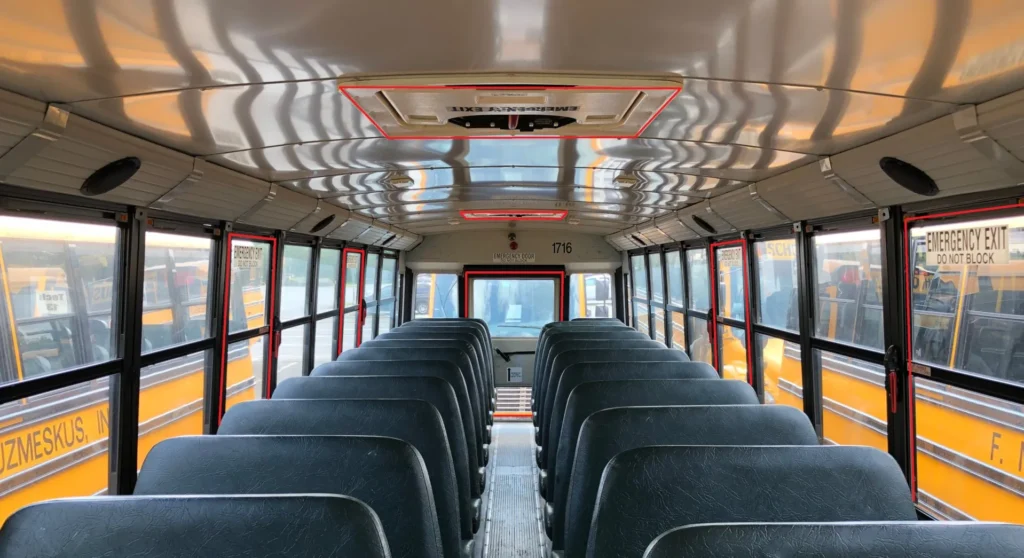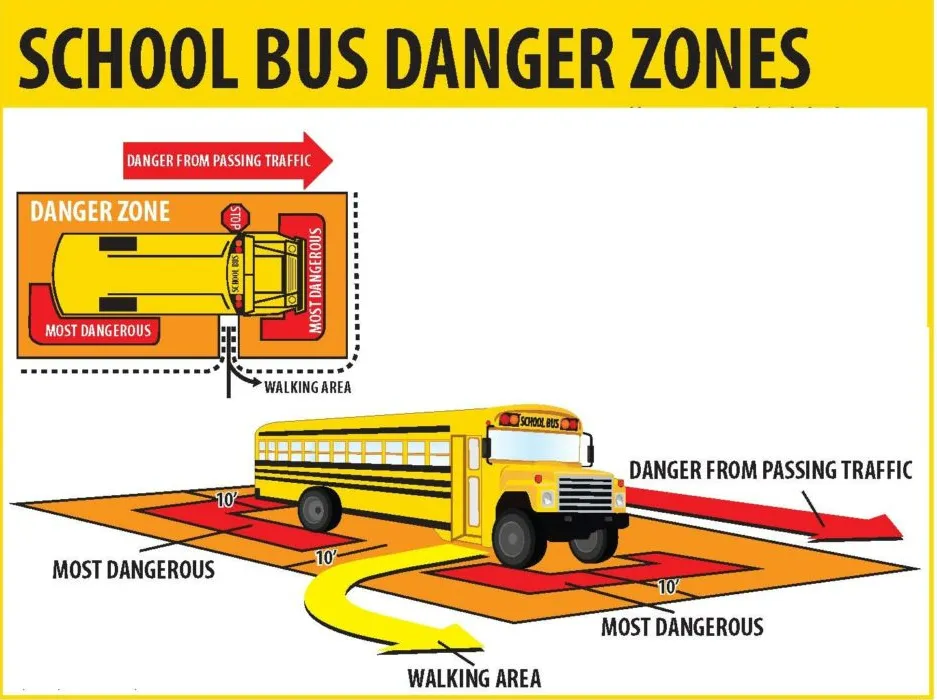School Bus Safety
Our mission is to ensure the
safety of every passenger!
Providing a strong start and end to a student’s day is the key to success.
School Bus Facts
Today’s school buses are tougher, cleaner and more diligently maintained than ever before. School bus drivers are well-trained and school bus traffic laws are strictly enforced.

Statistics
- Students are about 70 times more likely to get to school safely if they take the school bus instead of traveling by car.
- From 2006 to 2015 there were 301 school-age children killed in school transportation-related crashes:
- 54 were occupants of school transportation vehicles including cars, vans, and buses
- 137 were occupants of other vehicles
- 102 were pedestrians
- 8 were pedal cyclists.
- At the national level, there are currently 10 congressional committees and a number of departments that directly affect the industry— including three Department of Transportation agencies.
- School bus ridership saves over 20 million tons of CO2 emissions each year. The average Passenger Miles Per Gallon delivered by buses is 208.1. By comparison a fully loaded airliner is less than 60, and the family car is under 30.
Federal & State Safety Requirements
- School buses have…
- Flashing red lights.
- Cross-view mirrors.
- Stop arms sign(s).
- Protecting seating.
- Rollover protection.
- High crush standards.
- Standardized coloring.
- Drivers are…
- Subject to preemployment and random drug/alcohol testing.
- CORI Checked.
- Fingerprinted.
- Frequent driving record checks.
- Trained in safety and security procedures.
- Trained in emergency medical procedures.
- Trained in student behavior management.
Safety Starts at the
Bus Stop
The greatest risk to your child is not riding the school bus, but approaching or leaving one. It is important for you and your child to
understand traffic safety rules.

Getting to the Bus Stop
- Arrive at the bus stop 5 minutes before the bus is expected.
- Walk against traffic if you have to walk on roads where there is no sidewalk. Try and stay off the road as much as possible.
- Look left, then right, then left again when crossing the street to get to the bus stop. Don’t run.
Getting On the Bus
- Stand 3 giant steps away from the curb when waiting at the bus stop.
- Stand single file without pushing or shoving. Don’t crowd others in the line.
- Wait until the bus stops, the door opens, and the driver clearly gestures to board before approaching the bus or crossing the street.
- Let the bus driver know if you drop something near the bus. Don’t pick it up until after they’ve acknowledged it is safe to do so.
- When you get on the bus, take your seat quickly.
Riding the Bus
- Stay in your seat until you arrive at your destination.
- Keep the aisles clear with your belongings securely on your lap or in your backpack.
- Practice “safe-hands”; do not touch other passengers.
- Keep hands and objects inside of the bus at all times.
- Socialize quietly; there are many people on the bus. Do not shout or make loud noises that could distract the driver.
- Always follow the driver’s instructions.
Getting Off the Bus
- Remain seated until the bus has stopped and the service door has opened.
- Use the handrail when exiting the bus.
- Ensure that you don’t get caught when exiting the bus; secure loose clothing, straps, and other materials.
- If you have to cross the street:
- Only cross in front of the bus!
- Walk at least 5 giant steps ahead of the bus before crossing.
- Make eye contact with the driver.
- Wait for a signal from the bus driver before crossing.
Parents & Guardians
Did you know?
Only school representatives and emergency personnel are allowed on the school bus.

Tips for New Riders
- Put your student’s name inside their backpack. It can help to identify them quickly.
- Your student may not be strapped-in; talk them about safety before riding the bus.
- Periodically review the school calendar; some districts offer an alternative schedule for new students.
- It is important to keep your contact information updated with the school district.
- Some districts require a parent or guardian at the bus stop in the morning and afternoon. School bus drivers never want to leave young students alone.
- All changes to transportation should be in writing and approved by your child’s school.
- The school bus environment is an important part of a student’s socio-emotional growth.
Activity Book
Evacuation
All school buses are equipped with a service door located at the front, passenger side of the bus, two window emergency exits on each side, two emergency roof hatches, and one emergency door located at the back of the bus.

School Bus Evacuation Procedures
- Listen to the driver’s instructions.
- Be calm, quiet, and don’t panic.
- Leave your belongings behind.
- Exit seat-by-seat, alternating rows.
- Leave the bus quickly without pushing or shouting.
- When exiting the rear of the bus, sit then slide, do not jump.
- Walk to a safe place, away from danger, and stay together.
Danger Zones
The Danger Zone is the area around a school bus that is visually limited to the driver.

Safety Habits Around a School Bus
- Make eye-contact with the driver before approaching a school bus.
- Wait until the bus stops, the door opens, and the driver clearly gestures to board before approaching the bus or crossing the street.
- If you have to cross the street:
- Only cross in front of the bus!
- Walk at least 5 giant steps ahead of the bus before crossing.
- Make eye contact with the driver.
- Wait for a signal from the bus driver before crossing.
- Let the bus driver know if you drop something near the bus. Don’t pick it up until after they’ve acknowledged it is safe to do so.
- Take 3 giant steps away from the bus after exiting.




